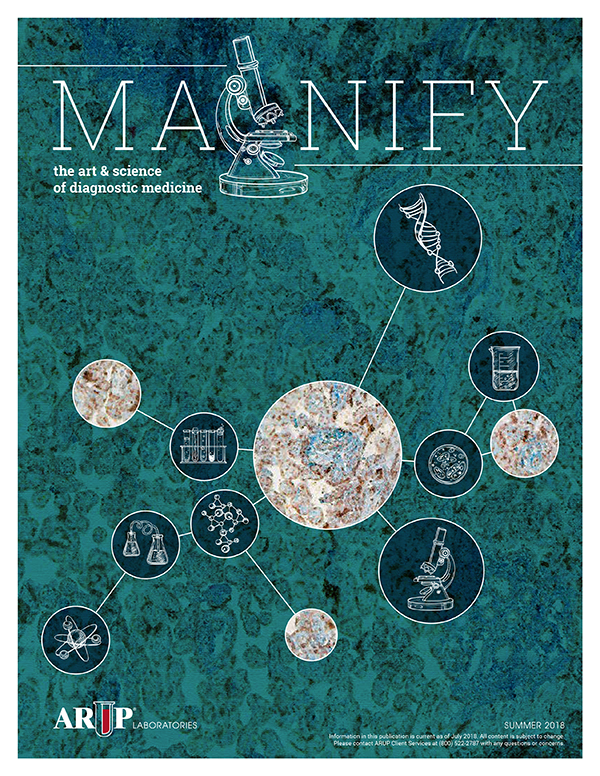
‘The Biggest Advancement in Parasite Screening Since the Microscope’: Leveraging Artificial Intelligence Improves Diagnosis
With the expansion in March 2025 of its artificial intelligence (AI) screening algorithm for the detection of human gastrointestinal parasites to include the wet-mount part of the testing method, ARUP became the first laboratory in the world to apply AI screening to the entire ova and parasite testing process.
“By using an AI-augmented screening approach, we have seen a significant increase in sensitivity and diagnostic yield,” said Marc Couturier, PhD. “The screening tool minimizes human error and detects ova and parasites that may otherwise be missed, which improves clinical diagnosis and ultimately treatment for patients who are affected.” Couturier, who formerly served as ARUP’s head of clinical operations for Clinical Microbiology and Immunology and as the medical director of Emerging Public Health Crises, Parasitology and Fecal Testing, and Infectious Disease Antigen Testing, led the development of AI-augmented parasitology screening at ARUP.

For decades, traditional microscopy has remained the standard method for detecting gastrointestinal parasites. The labor-intensive and time-consuming approach requires highly trained technologists to spend hours at a microscope manually examining slides.
In 2019, ARUP revitalized what had been a stagnant field by implementing the world’s first AI-augmented screening tool for the detection of gastrointestinal parasites. The tool initially included screening of trichrome-stained slides, one of two parts of the ova and parasite testing process. The second part involves examination of the wet-mount slides.
“This is the biggest advancement in parasite screening since the invention of the microscope,” said Ryan Jensen, M(ASCP)CM, group manager of the Infectious Diseases Division.
ARUP developed the AI solution in partnership with Techcyte, a leader in the development of AI-powered solutions for anatomic and clinical pathology.
The addition of AI has allowed the parasitology staff to perform testing more efficiently. Prepared slides are scanned into a digital database and then initially screened by an AI algorithm for the presence of ova and parasites. Technologists then evaluate any specimens flagged by the algorithm as likely positive to identify and confirm the organism. Specimens identified as likely negative are also scrutinized by technologists and are not assessed by AI alone.
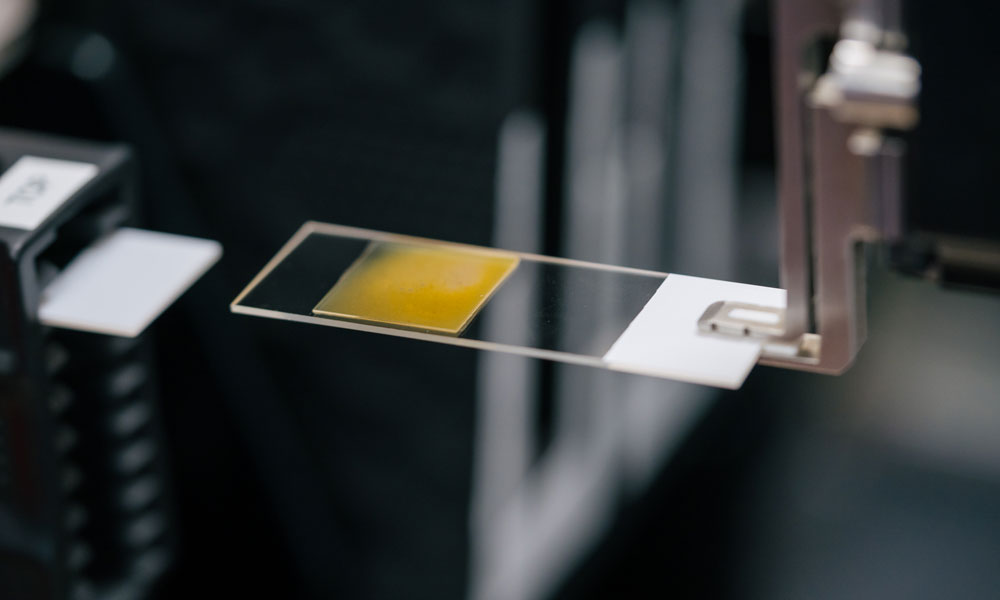
By leveraging the efficiency of AI, along with the experience of its highly trained parasitology staff, ARUP produces results with improved specificity and sensitivity. Since the initial launch of the tool in 2019, the positivity rate has steadily increased.
“In fact, the positivity rate has almost doubled at this point,” said Couturier. “We’ve seen so many instances in which we are finding more parasites than we were before.”
The AI-enhanced process enables a level of precision that is not easily achieved by humans. The scanner can perfectly scan the entire slide each time, which is an unreasonable expectation for even the most experienced technologist. However, missing even a tiny section of the slide can prevent diagnosis.
“Eggs of worms are notoriously difficult because they are excreted in very low prevalence. If that one egg happens to be in the sliver that was missed, we don’t see it,” Couturier said. “Parasitology is a very difficult discipline. No matter how good your staff is, and ARUP has some of the best, there are inherent limitations.”
AI has also made it possible to detect parasites with unconventional methods.
Cyclospora, a protozoan parasite that causes seasonal illness in the United States and can cause severe diarrhea, was not detectable by standard trichrome staining because the dyes were unable to penetrate the oocyst wall. Instead, Cyclospora required a separate stain, known as a modified acid-fast stain, for detection.
However, the AI-augmented method is sensitive enough to detect Cyclospora from the trichrome stain and wet mount, and that initial detection can then be confirmed with fluorescent microscopy. Since the addition of Cyclospora to the AI model, ARUP has been able to report Cyclospora results from the trichrome stain rather than requiring a separate test.
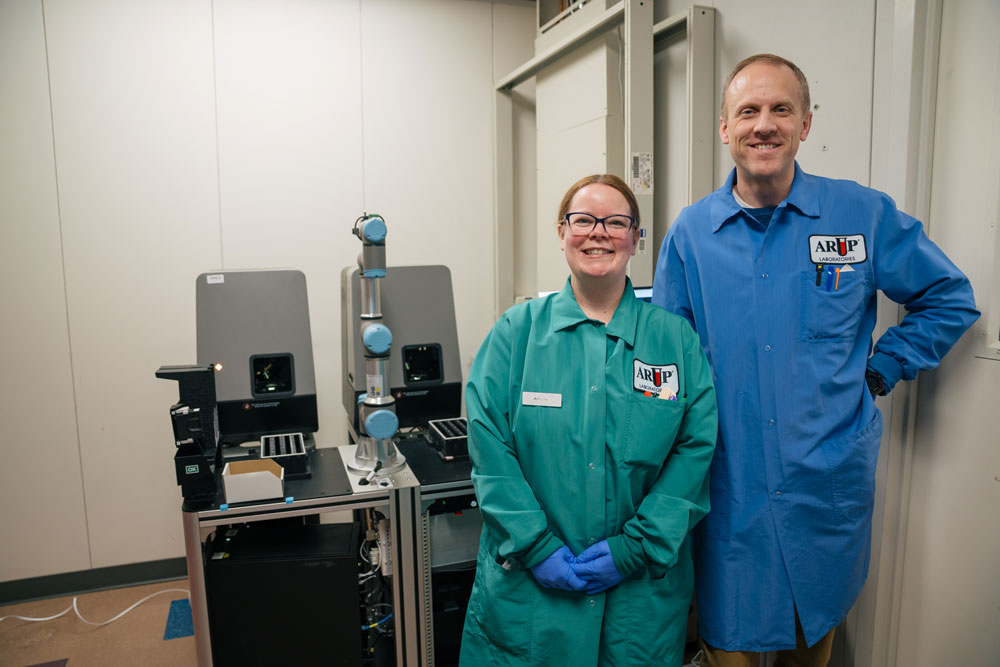
“We have good sensitivity already, but we know this is going to augment that sensitivity even further,” said Cole Neider, BS, I(ASCP), lab supervisor of the Parasitology and Fecal Testing Laboratory. “Even in samples that were originally reported as negative, the software has found organisms. The AI algorithm is about three to four times more sensitive than a human.”
In addition, the increase in efficiency has allowed the lab to institute a double read-back policy that further ensures a high level of accuracy. In accordance with this policy, the findings of the first technologist are confirmed by a second technologist, and any discrepancies are escalated to a senior technologist or medical director.
“A mechanical process driven by a computer algorithm is better in some respects,” Couturier said. “But what the software can’t do is be infallible on the identification. … Our staff members, especially with the verification process, are nearly infallible.”
Every Parasite That Can Be Detected in Stool
The ARUP team completed a comprehensive and thorough validation of the AI screening tool. They accounted for an extensive number of organisms, including organisms that are rarely seen in the U.S.
“We have to account for everything, because you never know what a patient might have encountered,” said Blaine Mathison, BS, M(ASCP), technical director of Parasitology at ARUP, who played a key role in the validation process. “There are 26 organisms on the wet-mount model compared with around eight targets for the trichrome.”
Mathison and his colleagues worked with international collaborators to acquire specimens of these rare and exotic parasites to use in training the AI recognition software.
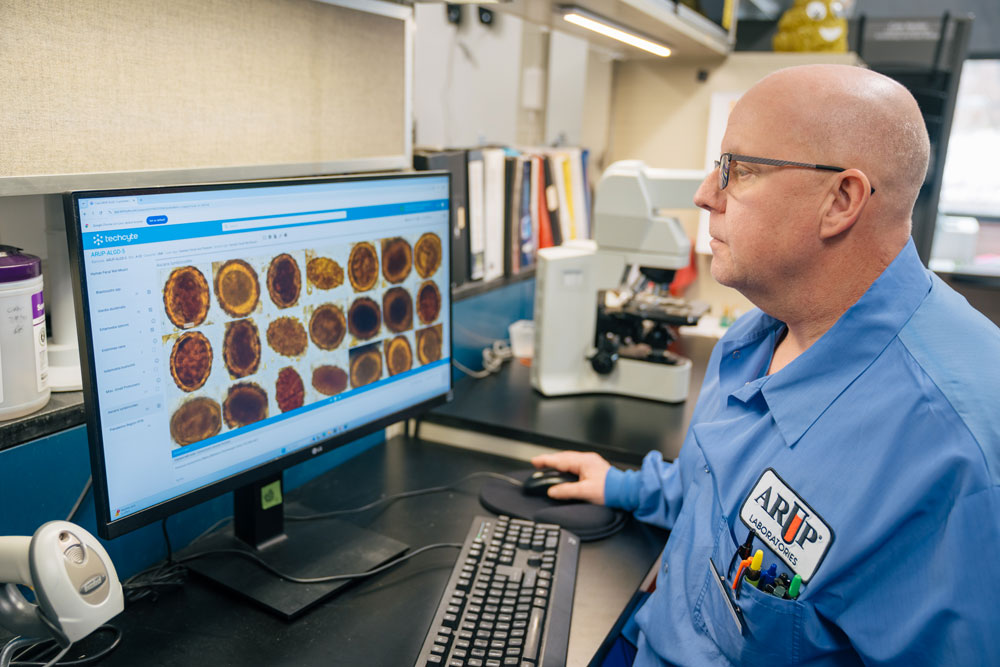
“We have some rare organisms in this model that I guarantee most lab staff have never seen,” Mathison said. “In my 25 years of experience, I’ve only seen some of these once or twice.”
These rare organisms include Schistosoma japonicum and Paracapillaria philippinensis from the Philippines and Schistosoma mansoni from Africa.
“Our validation was so thorough, we validated all parasites likely to be detected in stool,” Jensen said.
Working with a liquid specimen presented another series of challenges.
Unlike trichrome stains, wet-mount slides quickly dry out, and the quality of the specimens deteriorates. This creates a limited window in which slides can be scanned from the time they are prepared. To solve this challenge, the ARUP team developed a new mounting media to extend the longevity of prepared slides.
In liquid specimens, objects can settle at different depths. While worm eggs can be 150 μm in size, protozoa tend to be only 5 μm. The difference in size means that the scanner needs to scan at different depths to capture both eggs and protozoa. The software then stitches together the scans to create a single image.
Mathison spent a significant amount of time performing discrepancy analysis to confirm the AI was recognizing organisms accurately. In some cases, the AI tool detected more organisms than originally found in the specimens. Mathison reanalyzed the specimens to confirm the AI tool’s findings.
“Our limit of detection studies consistently showed the scanner and software were more sensitive than technologists,” Mathison said.
Once validation was completed and the AI algorithm had been sufficiently trained to recognize the organisms, the team locked down the model so that it “does not adapt or deviate from the expected performance,” Mathison said.
Efficiency Gains Increase Job Satisfaction
The advancement in AI also benefits staff working in the laboratory. Spending a significant amount of time at the microscope is tiring for staff.
“Time at the microscope can be draining and cause problems such as repetitive stress injuries and eye strain,” Jensen said. “We have already seen our time at the microscope reduced in half, and the addition of the wet-mount part will reduce that time even more.”
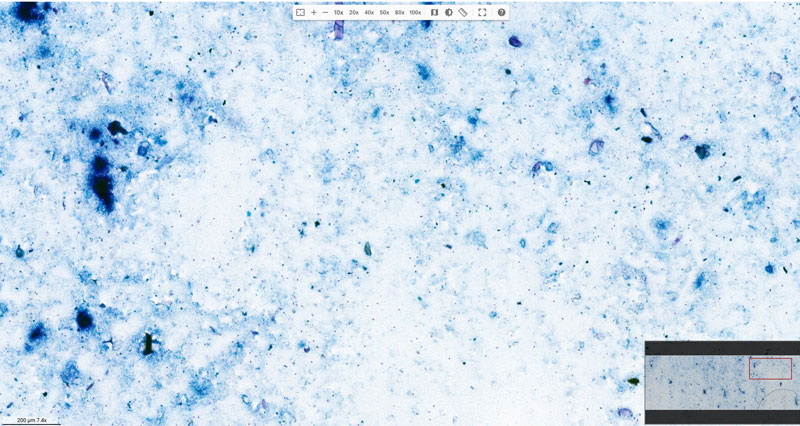
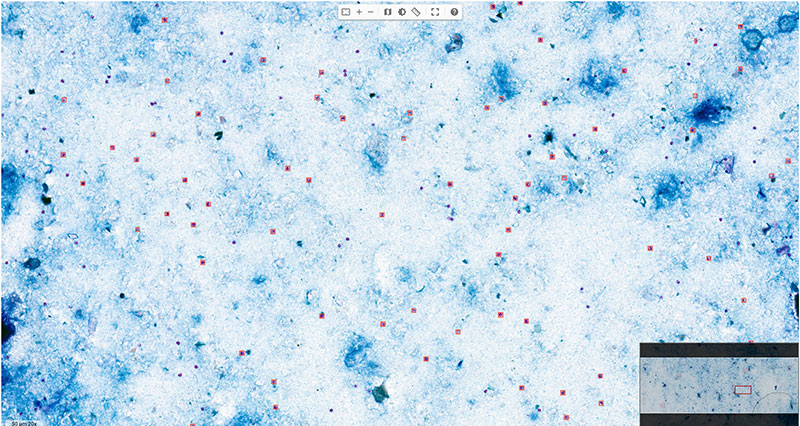
A prepared modified acid-fast stain with a fecal specimen that contains Cryptosporidium. The image on the left depicts a standard whole slide, which a technologist would evaluate manually with conventional testing. The image on the right demonstrates the assistance AI provides by detecting the presence of parasites, as indicated by the small red boxes.
Jensen and Nieder expect the increased automation to improve job satisfaction among laboratory staff. While the addition of AI will improve efficiency and increase capacity, it doesn’t negate the need for competent parasitologists.
“As a screening tool, the AI filters out negative specimens. It doesn’t diminish the need for competent staff who can identify parasites,” Mathison said.
In addition, parasite detection has placed an increasing strain on clinical labs. The requirement for extensive training and the manual labor involved makes maintaining this testing challenging.
“There is less and less expertise in the field, and there are fewer opportunities to gain the necessary expertise,” Jensen said. “The more you are exposed to organisms, the faster you become proficient.”
A typical clinical lab may see only two to three samples in a day, but as an academic reference laboratory, ARUP processes hundreds of samples every day. The sheer volume of testing and the variety of organisms that pass through ARUP’s laboratory have helped to establish a highly competent parasitology staff.
“I’d put our parasitology lab against any other parasitology lab in the country,” Jensen said.


